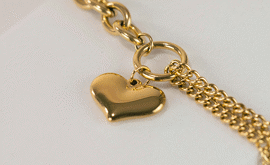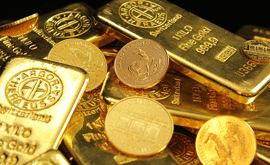How Much Gold Is There in the World? Surprising Facts and Figures
The total supply of gold in human history
Over the course of recorded history, it is estimated that humans have mined around 216,265 tonnes of gold worldwide. To clearly illustrate this amount, we can visualise that all of this gold melted down could fit into a single cube with each side measuring around 22 metres in length - showing just how rare and limited the global supply of gold really is.
Unlike most other resources on earth, gold does not corrode or disappear, meaning that almost every single ounce that has ever been extracted still exists today in some form or another. This enduring quality makes gold one of the most recognised and carefully measured resources in the world.
How much gold is mined each year?
Global gold production has remained steady in recent years, with the annual total amount mined hovering around 3,500 tonnes to meet demand.
China reigns as the world’s largest producer of gold, with Australia and Russia following close behind. This annual supply is tracked by industry bodies like the World Gold Council, who ensure we have accurate information on how much new gold enters the market each year.
Where the world’s gold is stored and used
Gold is deeply ingrained in today’s culture and technology, and the world’s above-ground gold is distributed across several key sectors:
- Jewellery
The largest share is held in jewellery, with around 45% of the world’s gold allocated here, illustrating gold’s significance in not only wealth but also cultural tradition in countries such as India and China.
- Bullion
Around 22% of the world’s gold is used for gold bullion - gold coins and bars kept in private holdings for trading and investment purposes.
- Central Banks
Around 17% of the world’s gold is held by central banks around the world, showing the importance of this precious metal as it is strategically used to bolster currencies, especially in times of economic turmoil.
- Industry
The remaining 16% of the world’s gold is used for a variety of purposes and industries including electronics, medicine, computing, and aerospace technology.
How much gold still remains underground?
Although much of the accessible gold on Earth has already been mined, the World Gold Council estimates that there may be around 57,000 tonnes of gold remaining underground, yet to be extracted. Many of these deposits lie in remote and hard to access areas, with some embedded deep below the Earth’s surface which may require complex and expensive mining operations in order to extract it. It is also believed that huge quantities of gold may lie at the bottom of the world’s oceans, but it is impossible to extract it from here with current technology.
With many of the known and easier-to-access sources of gold already depleted, undiscovered or inaccessible deposits continue to intrigue. Finding new sources of gold is becoming more challenging, and mining companies are now needing to explore deeper underground than ever before and explore uncharted territories in search of gold.
Could the world ever run out of gold?
At today’s pace of about 3,500 tonnes mined each year, some experts have estimated that known reserves could run out in roughly 15 to 20 years. However, in practice, the answer to this question is more complex because although new accessible deposits are becoming rarer, advances in technology may begin to uncover some previously hidden or inaccessible gold reserves in the future.
If mining does slow down in the future, gold will still remain available through recycling and secondary recovery. It is believed that around 90% of the gold that has ever been mined is still in circulation today, as gold is one of the most highly recycled items in the world. A surprisingly huge amount of gold items such as jewellery, coins, and bars are actually thought to be made from recycled material as this precious metal can be melted down and reused repeatedly without losing its quality, purity, or value. The recycling process will ensure that gold will remain part of the global economy in the future, while also reducing the environmental impact of extraction.
In conclusion, gold’s rarity, durability, and sustainability ensure that it will continue to be an important part of global culture, trade, and technology well into the future.
This blog represents one person’s opinion only. Please note, gold and silver prices may go down as well as up. Atkinsons Bullion & Coins accepts no responsibility for any losses based on information we have provided. We do not offer investment advice. Please carry out your own research before making an investment decision.














